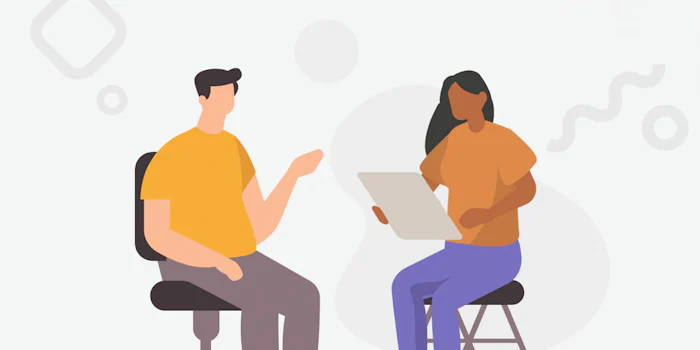“Take care of your body. It's the only place you have to live.”
- Jim Rohn (1930-2009), U.S. author, entrepreneur and motivational speaker.
About This Week’s Chat: Use It or Lose It!
Our bodies are designed to move. We have more than 600 muscles, 206 bones, and about 230 moving joints as proof. Yet, many people sit for up to eight hours a day – and sitting isn't good for your health.
Do you know people who can't bend down to reach something at the back of the cupboard? Or those who struggle to climb a few flights of stairs at work? And we're not talking about folk with an illness or a disability here. Maybe you're one of them.
So, how do people lose their range of movement as they grow older? The answer is simple: gradually. It doesn't happen overnight, but little by little.
The less you use muscle groups, or bend and stretch, the less mobile you become. The body loves conserving energy, and it operates according to a simple principle: it will keep what you use. Maintaining what you don't use takes unnecessary energy, so if you don't use it, you lose it.
Here's the scary part: your brain and its countless neural pathways govern every movement you make, and if you don't do certain movements, there's no reason for the brain to maintain those neural pathways. This means that you not only lose the muscle's ability to execute the movement, but those neural pathways shut down, too.
Fortunately, these consequences aren't permanent, and we can regain functionality and mobility and wake up old neural pathways.
Exercise and Physical Health at Work
Have you ever thought of the role that health and fitness play in your productivity, motivation and energy at work? In this week's #MTtalk Twitter chat we'll discuss "Exercise and Physical Health at Work." In our recent Twitter poll, we asked people how regularly they exercised. Almost half of the respondents said that they only exercise now and again or that they're couch potatoes. To see all the results click here.
One of the biggest threats to our health – and one that many of us face at work – is sitting down all day. During our #MTtalk Twitter chat last week, we discussed "Exercise and Physical Health at Work." Here are all of the questions that we asked during the chat, and some of the responses:
Q1. What do you think is the most important benefit at work of being physically fit?
@harrisonia Being physically fit helps keep you nimble and improves your response time internally, which then shows externally.
@jeremypmurphy Physical fitness relaxes us and sparks creativity for stronger, more productive days: brings happiness and joy too.
Q2. How does your workplace promote/encourage employees to stay healthy?
(Helping your employees to stay healthy is a great return on investment, yielding less sick days and higher productivity!)
@70mq My workplace is my home. I can plan healthy meals & I can work out my own walking/Pilates schedule. So I am very lucky.
@Jikster2009 A dedicated interchange site for physical/mental/emotional/financial well-being. They regularly publish articles of support.
Q3. Some workplaces include opportunities for ad hoc activities such as table tennis in the office – how useful or appropriate is this trend?
@Yolande_MT In my opinion this trend is useful, appropriate and necessary! We can’t think about offices like we did 40 years ago.
@maat333 Very! It promotes three elements at the same time: Physical exercise, team integration & the healthy distraction from work.
Q4. In your opinion, what are the dangers of sitting too much?
@MicheleDD_MT Sedentary lifestyle is as hazardous as smoking. Leads to increased heart disease, obesity, high blood pressure.
@katefrappell Tailbone pain! Super inconvenient, painful and not easily cured. Apparently super common too…?
@MurrayAshley Back pain. I speak from experience. All the hunching is a huge problem.
Q5. How can you build more movement into your daily activities?
(There’s a lot you can do to move more, and it doesn't have to involve a gym!)
@Midgie_MT Take a walk break rather than coffee break, hold walking meetings rather than sit-down kind, park car further away from office.
@manavlalotra I wear a tracker device, ensure that I walk at least 10K steps every day, take stairs instead of elevators, go to people rather than calling.
@NBlairHRDigital I work from home, so it is a priority that I move about during the day. I may have had a little dance during a break! Lol.
Q6. What role does your journey to work have in your physical health? What changes could you make?
(Many people must use cars for practical reasons, but almost all agreed that negotiating heavy traffic isn’t a great way to start your day.)
@hopegovind I usually park my bike around half a kilometer away from the railway station and never take an auto for a distance less than two kilometers.
@Jikster2009 When commuting I now walk 30 mins from central London station to my office (and back) rather than get the Underground.
Q7. What types of exercises have you found to be best for your overall health and well-being?
(Participants engage in a wide range of activities, from walking, cycling and swimming to boxing, dancing and playing with a dog.)
@rinkutalk For me what works best is yoga (ensures both physical as well as mental fitness) and stretches using theraband.
@GThakore Daily walking, deep breathing and meditation is enough to be happy, whole and healthy.
@TwisterKW I need music! I prefer to work out at home. Aerobic workouts. Worst case… I crank music and dance. Sweat, out of breath, happy!
Q8. In what ways can a healthy lifestyle help employees to improve their performance at work?
@LifeSpeak Healthy employees are more alert, engaged and resilient. Positive personal habits can translate into positive professional habits too.
@hibbikay Positive attitude and mindset; not sluggish.
Q9. How flexible could you be with an employee who wanted to exercise during their lunch break?
@thevijaymahajan You need to encourage and motivate such a person by recognizing their effort in setting an example.
@NWarind So flexible that I will exercise with them to bond and don’t let them get too carried out and get late for work!
Q10. How might you encourage employees to get active for the health benefits?
@BrainBlenderTec Strictly ballroom! Get team into dance lessons; it’s an amazing workout, fun and builds team bonds.
@Yolande_MT Hunger means your body needs nourishment, not loads of calories. Eat well. Move more. Start now.
@MicheleDD_MT We set up monthly activity challenges with small prizes. Create team events that get people up & moving.
Next time, on #MTtalk...
Big choices only come along every now and again, but small choices come along daily.
However, even small choices can make a major difference. We’d like to know which small choice in your life could bring about the biggest change. Let us know by voting in our poll over here.
In our next #MTtalk on Friday, November 10, our topic is “Small Choices, Big Changes.” To share your thoughts and ideas, please join us at 1 p.m. EDT/ 6 p.m. GMT/ 8 p.m. CAT/ 11:30 p.m. IST.
To participate, type #MTtalk in the Twitter search function. Then, click on “All Tweets” and you’ll be able to follow the live chat feed. To join the conversation yourself, simply include #MTtalk in your tweet and it will show up in the chat feed.
Resources
In the meantime, here are some resources that will help you to learn more about exercise and physical health at work:
Improving Physical Health and Well-Being at Work
Finding the Right Work-Life Balance
Avoiding Burnout
Coping Under Pressure
Getting More Exercise
Working With Seasonal Affective Disorder
And Mind Tools Club members can access the full versions of the following articles:
Walking Meetings
Creating a Healthy Workplace
Physical Relaxation Techniques
10 Ways to Get a Better Night's Sleep






